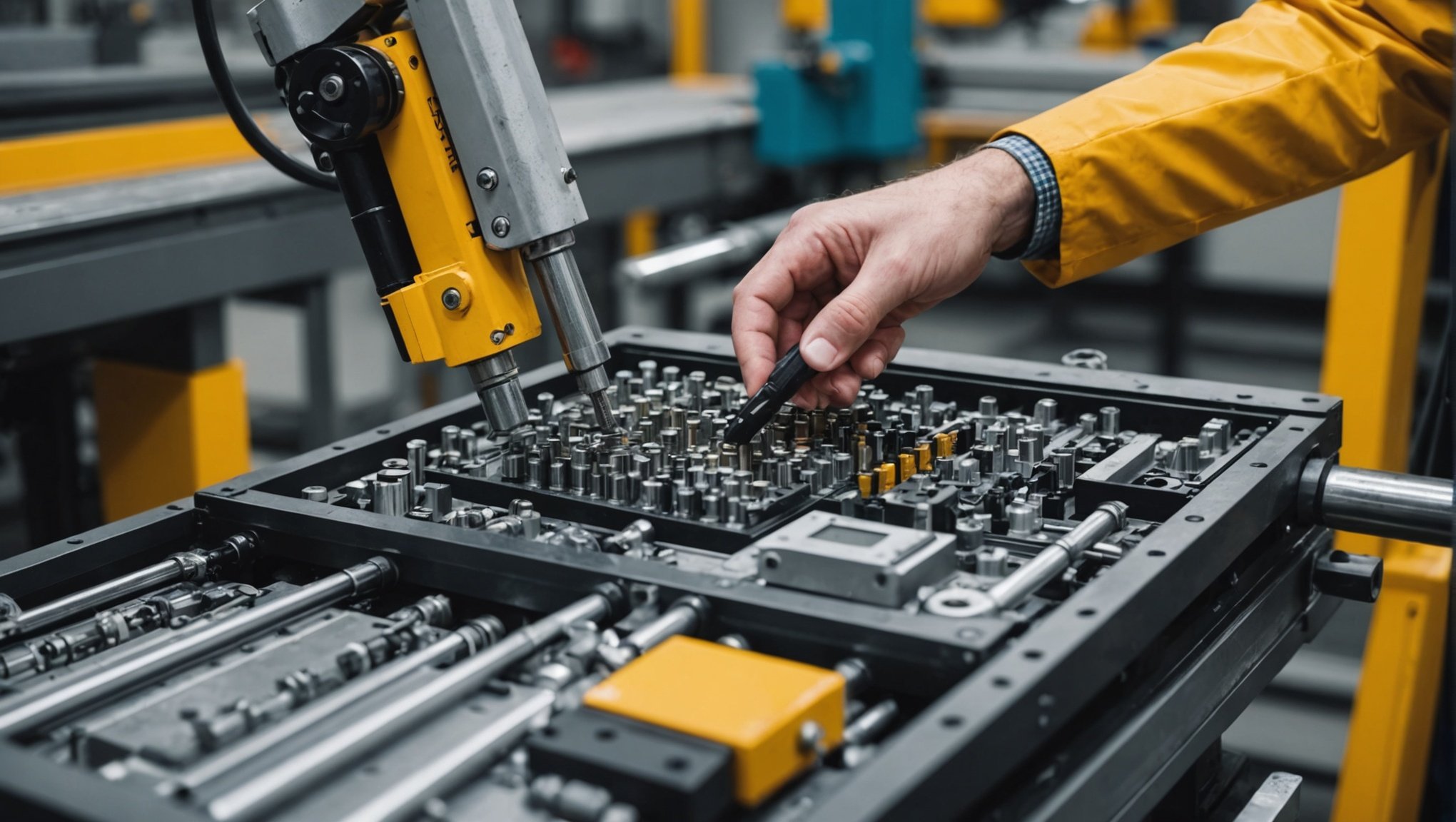Unlocking the Future: Enhancing Supply Chain Forecasting in UK Manufacturing with Machine Learning Techniques
In the ever-evolving landscape of UK manufacturing, the ability to predict and adapt to market demands is crucial for maintaining a competitive edge. The integration of machine learning techniques into supply chain forecasting has revolutionized the way companies operate, offering unparalleled accuracy, efficiency, and resilience. Here’s a deep dive into how machine learning is transforming supply chain forecasting in UK manufacturing.
The Challenges of Traditional Supply Chain Forecasting
Before the advent of machine learning, supply chain forecasting relied heavily on historical data and manual analysis, which often led to inaccuracies and inefficiencies. Companies faced significant challenges such as overstocking and understocking, high operational costs, and the inability to respond swiftly to market fluctuations.
Topic to read : Unlocking Transparency: Leveraging Blockchain Technology in the UK”s Organic Food Supply Chain
“Traditional supply chains have learned to prioritize resilience over efficiency by diversifying suppliers and increasing inventory. However, they still face vulnerabilities due to their complexity,” notes Anna Tinnin, Director of Strategic Accounts at GeakMinds.
The Role of Machine Learning in Supply Chain Forecasting
Machine learning has emerged as a game-changer in supply chain forecasting, enabling companies to make data-driven decisions with unprecedented accuracy.
Additional reading : Crafting Captivating Augmented Reality Advertising Strategies for UK Retail Success
Enhanced Accuracy
Machine learning algorithms analyze vast datasets, including historical sales data, market trends, seasonal variations, and even unstructured sources like news and social media. This comprehensive analysis delivers highly accurate demand forecasts, reducing errors by up to 50% and ensuring that companies meet customer demand more effectively.
Predictive Analytics
Predictive analytics, a cornerstone of machine learning, analyzes past data to identify patterns and trends. By leveraging predictive analytics, companies can anticipate future demand more accurately, enabling them to optimize production schedules, inventory levels, and supply chain operations.
“For instance, AI-powered analytics can analyze historical sales data across various seasons to forecast seasonal demand fluctuations, helping manufacturers to adeptly meet users’ demands during peak seasons,” explains an article on AI-based demand forecasting.
Key Applications of Machine Learning in Supply Chain Forecasting
Machine learning is not just a tool; it’s a transformative force in supply chain management. Here are some key applications:
Demand Forecasting
- Seasonal Demand Forecasts: AI models analyze historical sales data to predict seasonal demand fluctuations, ensuring that manufacturers can meet peak season demands efficiently.
- Supply Chain Optimization: By predicting raw material needs, AI helps in smooth supply chain management with minimal disruptions.
Inventory Management
- Real-Time Monitoring: AI uses image recognition and IoT technologies to monitor inventory levels in real-time, detecting when stocks are low and improving product placement strategies.
- Optimized Inventory Levels: AI-driven models optimize inventory levels by analyzing market trends and consumer demand, reducing the costs associated with overstocking and understocking.
Production Planning
- Forecasting Demand for Finished Goods: AI can meticulously forecast demand for finished goods, helping manufacturers adjust production schedules, reduce downtime, and maintain consistent quality standards.
- Quality Control: By analyzing data from various sources, AI can predict potential quality issues, enabling proactive measures to ensure high-quality products.
How Machine Learning Enhances Supply Chain Operations
The impact of machine learning on supply chain operations is multifaceted and profound.
Real-Time Visibility
Machine learning integrates with technologies like IoT and blockchain to provide real-time visibility into supply chain operations. This allows companies to respond swiftly to disruptions and make informed decisions based on current data.
“Accelerated digital transformation, including AI and automation, has become crucial for enhancing agility and predictive capabilities,” notes Anna Tinnin.
Operational Efficiency
- Automation of Routine Tasks: Machine learning automates routine tasks such as route planning, inventory management, and workforce planning, reducing human error and freeing up resources for more strategic activities.
- Predictive Maintenance: AI predicts potential equipment failures, ensuring uninterrupted operations and minimizing downtime and maintenance costs.
Risk Management
- Proactive Risk Monitoring: AI enables real-time risk monitoring by analyzing diverse data sources, helping companies anticipate and mitigate risks before they become major issues.
- Contingency Planning: Predictive analytics helps devise contingency plans, minimizing the impact of disruptions and ensuring business continuity.
Practical Insights and Actionable Advice
For UK manufacturing companies looking to leverage machine learning in their supply chain forecasting, here are some practical insights and actionable advice:
Embrace Digital Transformation
- Invest in Advanced Technologies: Adopt technologies like AI, machine learning, blockchain, and IoT to enhance visibility, efficiency, and decision-making.
- Leverage Big Data Analytics: Use big data and analytics to gain deeper insights into operations and predictive analytics.
Focus on Sustainability
- Implement Environmentally Responsible Practices: Optimize resource use and implement environmentally responsible practices to meet regulatory requirements and reduce impact.
Enhance Collaboration
- Shared Platforms and Real-Time Communication: Improve collaboration with suppliers and partners through shared platforms and real-time communication, leading to more synchronized supply chains.
Case Study: Successful Implementation in the Manufacturing Sector
A notable example of successful implementation is in the manufacturing sector, where AI demand forecasting has significantly enhanced productivity and efficiency.
Seasonal Demand Forecasting
A manufacturing company used AI models to analyze historical sales data across various seasons. This enabled them to forecast seasonal demand fluctuations accurately, ensuring they could meet peak season demands efficiently. As a result, they reduced warehousing expenses by 5-10% and administration costs by 25-40%, leading to substantial savings.
Supply Chain Optimization
By leveraging AI for supply chain optimization, the company was able to predict raw material needs accurately, ensuring smooth supply chain management with minimal disruptions. This led to improved production schedules, reduced downtime, and consistent quality standards.
Table: Comparing Traditional vs. AI-Driven Supply Chain Forecasting
| Aspect | Traditional Forecasting | AI-Driven Forecasting |
|---|---|---|
| Accuracy | Relies on historical data; prone to errors | Analyzes vast datasets; reduces errors by up to 50% |
| Predictive Capabilities | Limited to historical trends | Uses predictive analytics to anticipate future demand |
| Inventory Management | Manual monitoring; prone to overstocking and understocking | Real-time monitoring; optimizes inventory levels |
| Production Planning | Based on manual forecasts; may lead to downtime | Forecasts demand for finished goods; adjusts production schedules |
| Risk Management | Reactive risk management | Proactive risk monitoring; devises contingency plans |
| Operational Efficiency | Manual routine tasks; higher human error | Automates routine tasks; enhances operational efficiency |
| Sustainability | Less focus on sustainability | Implements environmentally responsible practices |
Quotes from Industry Experts
- “Generative and conversational AI are revolutionizing supply chains by enhancing demand forecasting, inventory management, supplier risk assessment, procurement optimization, logistics, and communication,” – Anna Tinnin, Director of Strategic Accounts at GeakMinds.
- “AI delivers powerful capabilities such as improved planning, forecasting, decision-making, operational efficiency, and risk mitigation. Hence, companies still relying on outdated technologies risk becoming obsolete,” – Cybage Blog.
The future of supply chain forecasting in UK manufacturing is undoubtedly tied to the adoption of machine learning techniques. By embracing these advanced technologies, companies can achieve greater accuracy, operational efficiency, and resilience. Here are some key takeaways:
- Adopt Advanced Technologies: Invest in AI, machine learning, blockchain, and IoT to enhance supply chain operations.
- Leverage Big Data Analytics: Use predictive analytics to gain deeper insights into operations.
- Focus on Sustainability: Implement environmentally responsible practices to meet regulatory requirements and reduce impact.
- Enhance Collaboration: Improve collaboration with suppliers and partners through shared platforms and real-time communication.
As the supply chain industry continues to evolve, one thing is clear: machine learning is not just a tool, but a transformative force that is unlocking the future of supply chain forecasting.
Actionable Advice for Companies
Here are some actionable steps companies can take to integrate machine learning into their supply chain forecasting:
Develop a Data-Driven Culture
- Encourage a culture that values data-driven decision-making. Invest in workforce development to ensure employees can effectively use new technologies.
Implement Real-Time Visibility
- Use technologies like IoT and blockchain to provide real-time visibility into supply chain operations. This will enable swift responses to disruptions and informed decision-making.
Automate Routine Tasks
- Automate routine tasks such as route planning, inventory management, and workforce planning to reduce human error and enhance operational efficiency.
Focus on Predictive Maintenance
- Use AI for predictive maintenance to anticipate potential equipment failures, ensuring uninterrupted operations and minimizing downtime and maintenance costs.
By following these steps and embracing the full potential of machine learning, UK manufacturing companies can position themselves for greater efficiency, resilience, and sustainability in the future.













